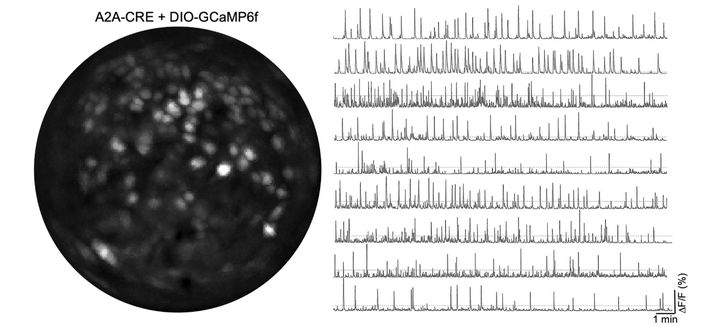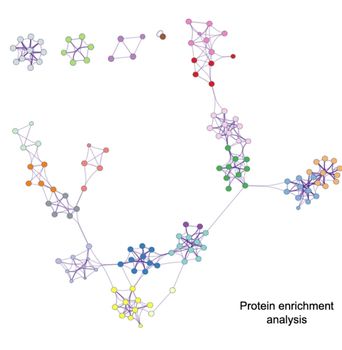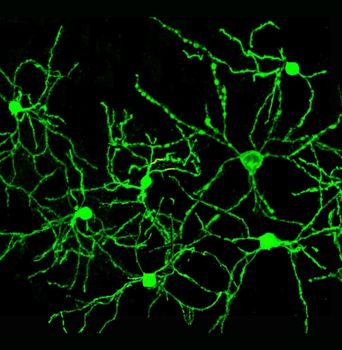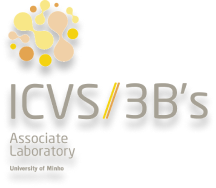
Sensory signals of associative learning
Through evolution, animals gained the remarkable ability to respond with sub second precision to environmental stimuli and to learn to associate those with positive or negative outcomes. This process of associative learning is key for successfully seeking rewards or avoid danger in an ever-changing environment. Since these processes were first described many decades ago, researchers attempted to dissect how the mammalian brain encodes relevant sensory signals from the environment and decodes such signals. Despite great advances, the circuit mechanisms of associative learning are still far from being completely understood.
Our research aims to understand the neural circuits underlying how sensory stimuli are associated with appropriate motivated behaviors.
To gain insight on the neural circuits encoding both positive or negative associative learning, we are using an integrative approach, resorting to omics, multi-site large scale electrophysiology, neurotransmitter and calcium signaling, and optogenetics coupled with behavior to determine the genetic and functional neuronal engrams of associative learning.
We are confident that, by using this multidimentional approach, we will generate essential knowledge on how sensory signals are decoded by the brain to engage appropriate associative behaviors.
Funding Agency
FCT
L’Oréal Portugal
Comissão Nacional da UNESCO
Bial Foundation
Órdem dos Médicos
IBRO Early Career Award
EASI Genomics
Project Reference
Bial Foundation, 175/2020
FCT, 2022.01467.PTDC




Project Members


Ana João Rodrigues

João Bessa

Nuno Sousa

Bárbara Coimbra

Claire Terrier

Tawan T. A. Carvalho

Ana Verónica Domingues

Natacha Vieitas-Gaspar

Raquel Correia

Anabela Ferreira

Rita Gaspar
Main Project Outcomes
S. Queirós, “Right ventricular segmentation in multi-view cardiac MRI using a unified U-net model”, in E. Puyol Antón et al. (eds) Statistical Atlases and Computational Models of the Heart. Multi-Disease, Multi-View, and Multi-Center Right Ventricular Segmentation in Cardiac MRI Challenge. STACOM 2021. Lecture Notes in Computer Science, vol 13131, pp. 287-295, Springer, Cham, 2022.
“Best Paper Award in the M&Ms-2 Challenge”, by M&Ms2 Challenge organizers and the Medical Image Computing and Computer Assisted Intervention (MICCAI) Society.
Main Project Outcomes
Papers
Domingues AV et al. Prenatal glucocorticoid exposure alters effort decision making and triggers nucleus accumbens and anterior cingulate cortex functional changes. Translational Psychiatry (2022)
Correia et al. Involvement of nucleus accumbens D2-MSN projections to the ventral pallidum in anxious-like behavior. BioRxiv (2022)
Soares-Cunha et al. Distinct role of nucleus accumbens D2-MSN projections to ventral pallidum in different phases of motivated behavior. Cell Reports (2022)
Soares-Cunha C et al. “Nucleus accumbens medium spiny neurons subtypes signal both reward and aversion”. Molecular Psychiatry (2020)
Soares-Cunha C et al. Activation of D2 dopamine receptor-expressing neurons in the nucleus accumbens increases motivation. Nature Communications 7:11829.
Advanced course
“Advanced methods for imaging and manipulation of neuronal circuits in vivo” (2022)
Awards
SPN Best Manuscript 2020, Portuguese Society for Neurosciences
Fulbright Scholarship for Professors or Doctorate holder Researchers (2019)
SPN Best Manuscript 2020, Portuguese Society for Neurosciences
Fulbright Scholarship for Professors or Doctorate holder Researchers (2019)
Media
A table talk about the team’s work on the national network RTP2 – https://www.youtube.com/watch?v=yGNy-UCcE0M
Interview about L’Oréal Portugal Honor medals for Women in Science –
https://www.rum.pt/news/investigadora-da-uminho-vencenbspmedalha-de-honra-loreal-portugal



Contact us
Phone: +351 253 604 967
Fax: +351 253 604 809
Email: icvs.sec@med.uminho.pt
Address
Life and Health Sciences
Research Institute (ICVS)
School of Medicine,
University of Minho,
Campus de Gualtar
4710-057 Braga
Portugal

Copyright ©2022 ICVS. All Rights Reserved



Copyright ©2022 ICVS. All Rights Reserved
Address
Life and Health Sciences
Research Institute (ICVS)
School of Medicine,
University of Minho,
Campus de Gualtar
4710-057 Braga
Portugal



Copyright ©2022 ICVS. All Rights Reserved
Address
Life and Health Sciences
Research Institute (ICVS)
School of Medicine,
University of Minho,
Campus de Gualtar
4710-057 Braga
Portugal

